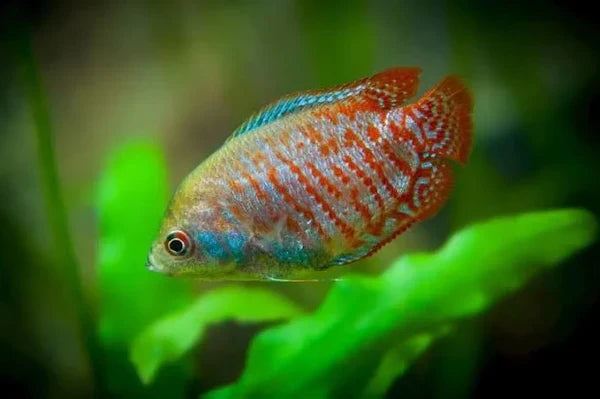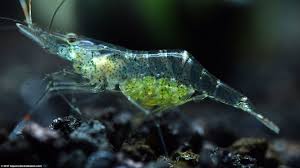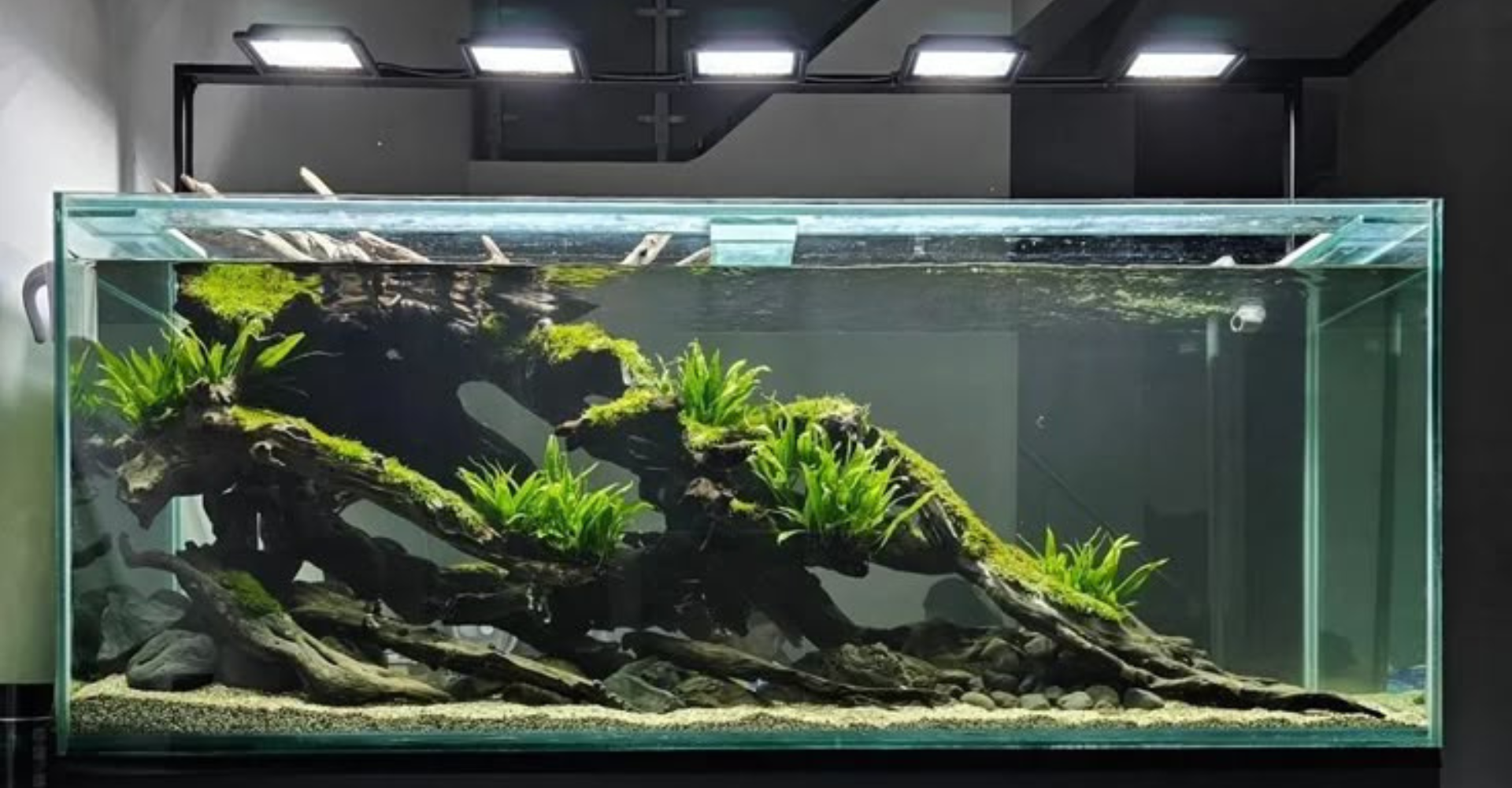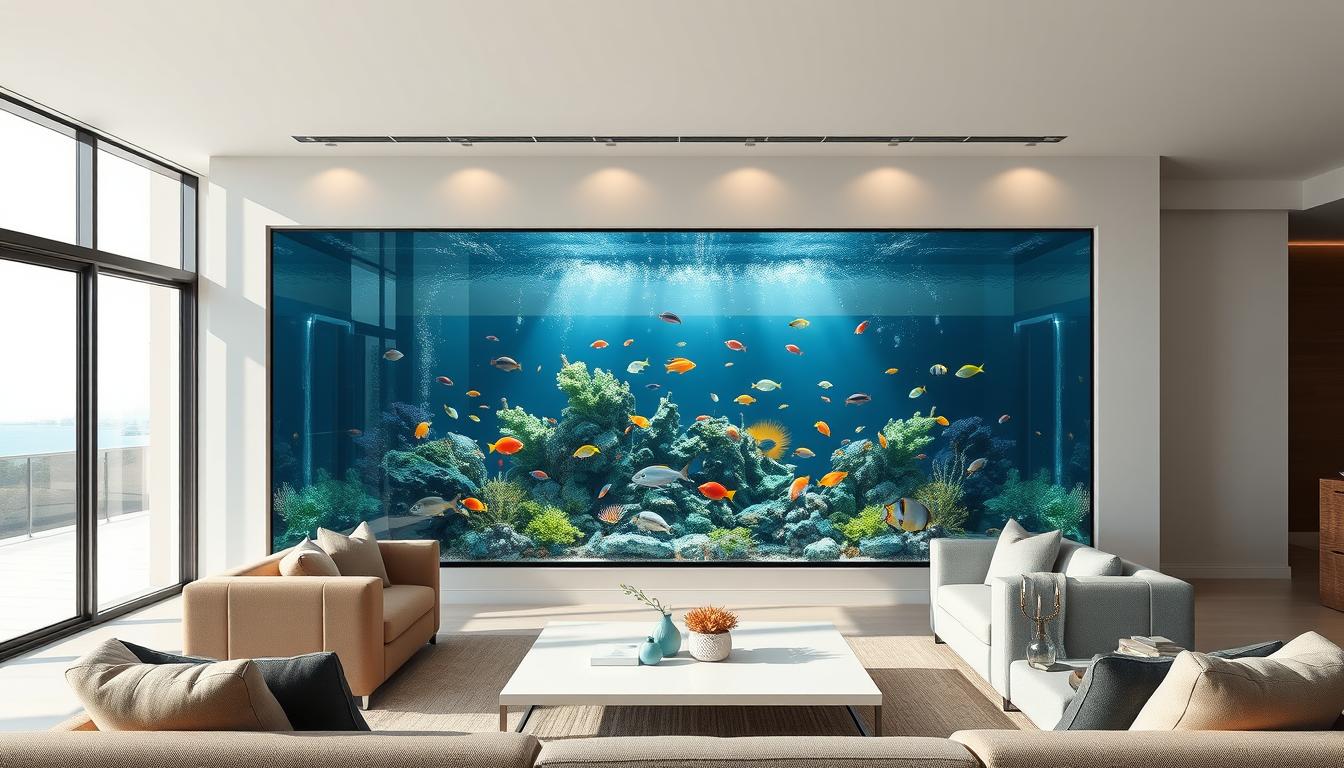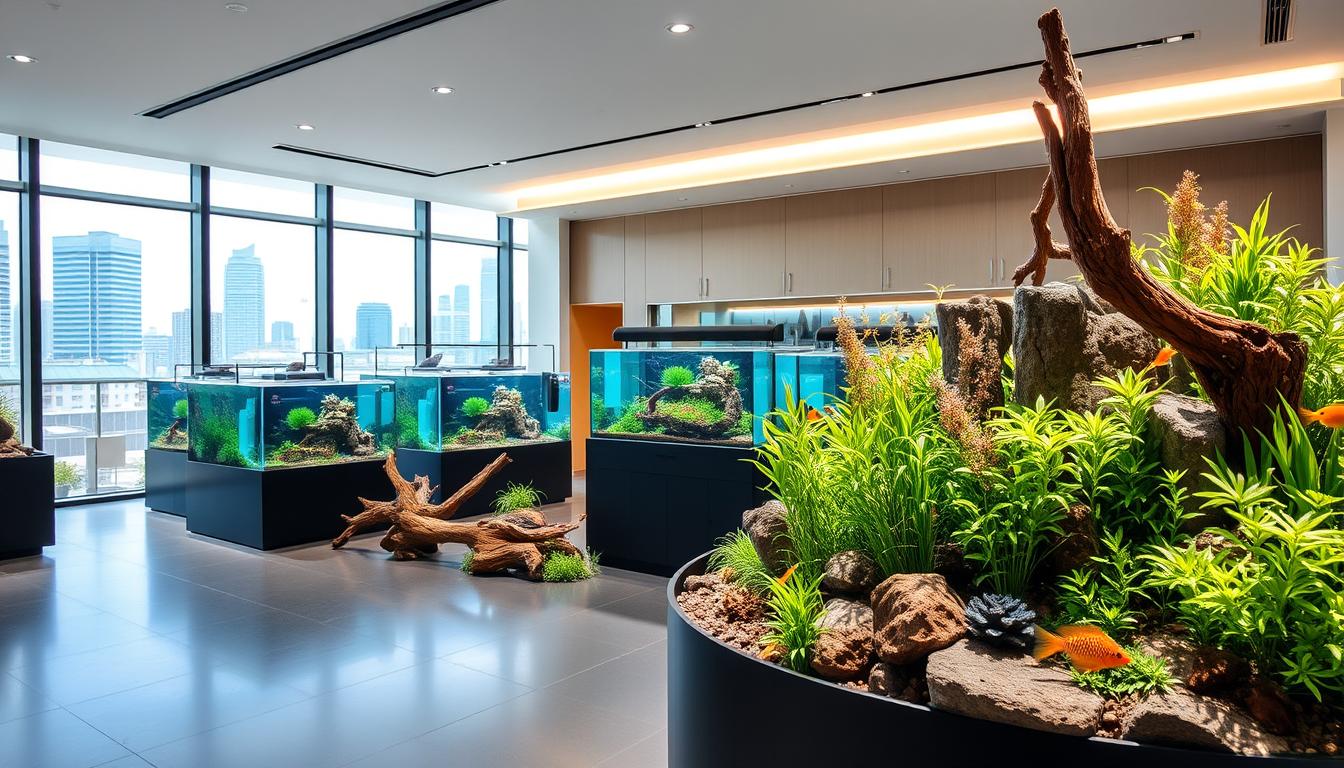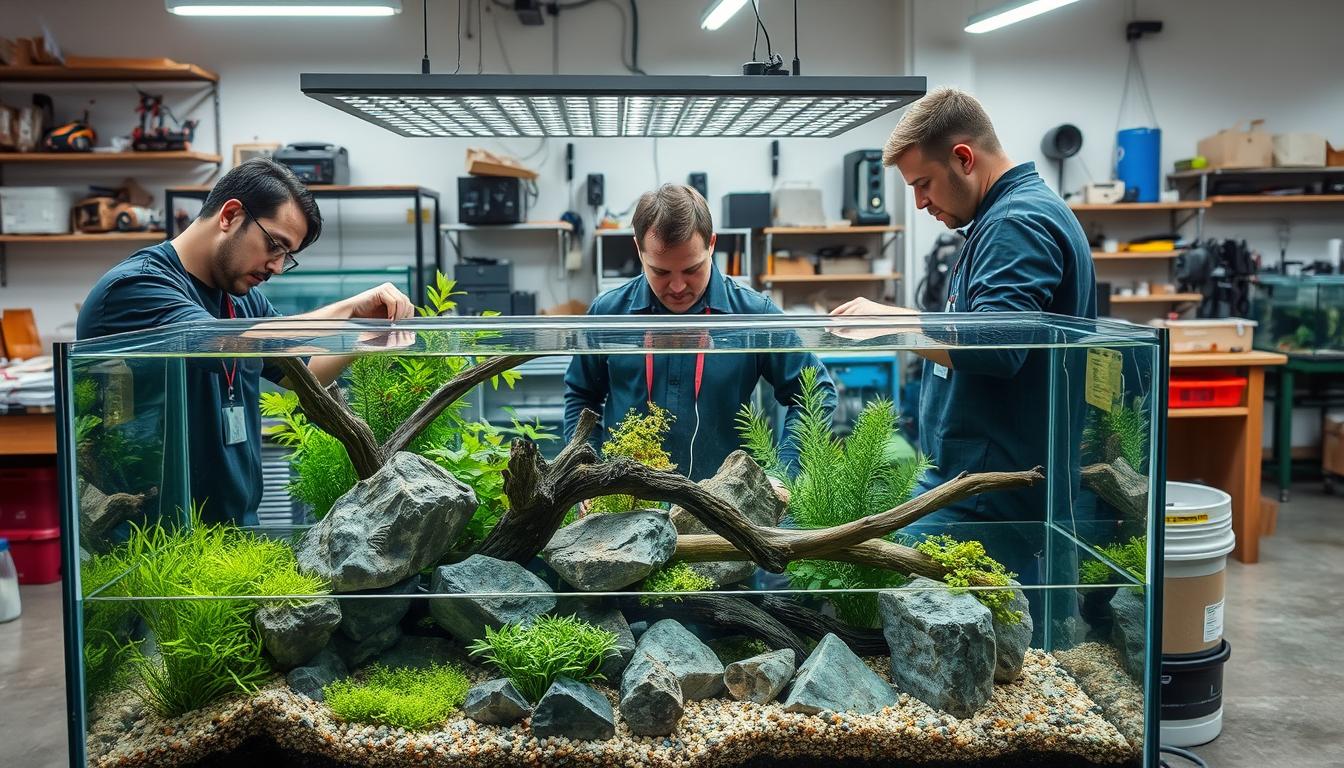If you’re after a fish that’s equal parts charming and low-maintenance, look no further. These speckled bottom-dwellers, native to South America’s Guaporé River, have won over Aussie aquarists with their striking looks and peaceful nature. Their dark bodies shimmer with bright white spots, while their chunky build gives them an endearing, almost playful appearance.

Perfect for community tanks, these catfish thrive in groups and spend their time sifting through soft substrates like sand. Their delicate barbels – whisker-like sensory organs – make them sensitive to rough surfaces, so a smooth base is key. Pair them with live plants and stable water conditions, and you’ll have a lively yet harmonious aquatic display.
What really sets this species apart is its adaptability. Unlike some finicky tropical fish, they handle typical Australian home aquarium temperatures well. Local experts at Micro Aquatic Shop recommend their easygoing temperament for both beginners and seasoned fishkeepers. Stay tuned as we dive into their care needs, ideal tank setups, and top feeding tips!
Key Takeaways
- Originates from South America’s Guaporé River region
- Recognisable by dark body with contrasting white spots
- Thrives in community tanks with smooth substrates
- Requires stable water conditions and group housing
- Australian stock available through trusted suppliers
- Ideal for peaceful aquarium setups
Introduction to Sterbai Corydoras
Looking for a fish that combines beauty with hardiness? These spotted bottom-dwellers might be your perfect match. Their starry white speckles glow against a charcoal backdrop, creating a living constellation in your tank. Unlike many tropical species, they’re surprisingly resilient, making them ideal for Aussie aquarists juggling busy schedules.

What Makes Them Special
Three traits set these catfish apart. First, their playful group dynamics – they’re social butterflies that thrive in shoals of six or more. Second, their signature polka-dot pattern remains vibrant even under standard aquarium lighting. Third, their peaceful nature makes them perfect neighbours for small tetras or dwarf shrimp.
Species Overview and Popularity
Reaching 5-6cm in size, these South American natives have become a staple in Australian community tanks. Local breeders like those at Micro Aquatic Shop report:
- 80% of customers choose them for their low-maintenance care
- Top sellers among nano-tank enthusiasts
- High demand for their algae-cleaning habits
Up next, we’ll explore their wild origins and how to recreate their natural habitat at home. Whether you’re setting up your first tank or expanding an existing aquatic family, these speckled charmers deliver endless fascination.
Discovering Their Natural Habitat
Imagine a slow-moving river where dappled sunlight filters through overhanging trees. This is the world these speckled catfish call home – South America’s Guaporé River. Its tannin-stained waters and sandy shallows create the perfect stage for their daily scavenging routines.

Origins in the Guaporé River Region
The Guaporé’s unique environment shapes every aspect of this species’ life. Soft, acidic waters (pH 6.0-7.0) flow over fine sand and leaf litter. These conditions keep their delicate barbels safe while they hunt for worms and insect larvae. Local currents maintain a stable temperature range of 24-28°C – a sweet spot Aussie fishkeepers can easily replicate.
Ideal Water Conditions in the Wild and Aquarium
Recreating their natural habitat starts with water chemistry. Aim for:
- Gentle filtration to mimic slow currents
- Driftwood or almond leaves to release tannins
- Smooth sand substrate to protect sensitive barbels
Australian aquarists often add Java fern or Amazon sword plants to mirror the river’s vegetation. These plants help stabilise water conditions while providing hiding spots. Regular testing ensures parameters stay within the species’ comfort zone, promoting active foraging and natural group behaviours.
By understanding their wild origins, you’ll create a thriving community tank that keeps these charming fish healthy. As Micro Aquatic Shop experts note: “Matching their native environment reduces stress and encourages their playful antics.”
Sterbai Corydoras Care: A How-To Guide
Creating a thriving home for these speckled catfish starts with understanding their core needs. Let’s break down the essentials for setting up their environment and introducing them safely to your aquarium.
Step-by-Step Care Instructions
- Prepare the tank first: Rinse sand substrate thoroughly to prevent cloudiness. Add smooth river rocks or rounded gravel to protect sensitive barbels.
- Cycle the water: Maintain stable parameters (pH 6.5-7.2) using liquid test kits. Australian fishkeepers should aim for 25-27°C using submersible heaters.
- Introduce food gradually: Offer sinking pellets at dusk when these nocturnal feeders become active. Supplement with blanched zucchini slices twice weekly.
Drip Acclimation Process for a Smooth Transition
New arrivals need careful adjustment to prevent shock. You’ll need:
- Clean bucket
- Airline tubing with control valve
- Water conditioner
Start by floating the transport bag in your tank for 15 minutes. Use the tubing to create a siphon, adjusting the flow to 2-4 drips per second. This 90-minute process lets fish adapt slowly to new water chemistry. Pro tip: Match temperatures within 1°C before starting.
After acclimation, gently net fish into their new home. Avoid pouring transport water into the tank. Monitor their behaviour closely for 48 hours – active substrate sifting means they’ve settled in comfortably!
Essential Aquarium Setup and Substrate Tips
Your aquarium’s foundation matters more than you might think. For bottom-dwelling species, the right base isn’t just decorative – it’s vital for their health. A poorly chosen substrate can lead to damaged barbels, stress, and infections.
Choosing the Right Substrate for Delicate Barbels
These whisker-like sensors help fish navigate and find food. Rough gravel can wear them down over time. Opt for fine sand or polished gravel with rounded edges. This mimics their natural riverbed environment while protecting their sensitive features.
Smooth substrates offer two key benefits:
- Prevent barbel erosion during daily scavenging
- Allow natural sifting behaviour without injury risks
- Support root growth for live plants like Cryptocoryne
Experts at Micro Aquatic Shop note: "A proper base encourages natural scavenging while protecting sensitive barbels from abrasions." Pair your substrate with driftwood or smooth stones to create shaded areas. This setup helps shy fish feel secure while maintaining tank cleanliness.
When arranging your aquarium, leave open spaces for foraging. Dense plant clusters near the back provide shelter without blocking movement. Regular vacuuming of sandy substrates prevents debris buildup, keeping water parameters stable for your aquatic crew.
Feeding and Nutrition for Healthy Corydoras
Keeping your bottom-dwellers in top shape starts with smart feeding strategies. These active scavengers need a mix of sinking foods and protein-rich treats to maintain their energy and vibrant patterns. Let’s break down how to create a meal plan that supports their natural behaviours.
Daily Staples for Active Foragers
High-quality sinking pellets should form 70% of their diet. Choose small, soft options that won’t damage delicate barbels. Pair these with:
| Food Type | Examples | Frequency | Key Nutrients |
|---|---|---|---|
| Staple | Algae wafers, crushed flakes | Daily | Fibre, plant proteins |
| Supplemental | Bloodworms, brine shrimp | 2x weekly | Animal proteins |
Feed small portions at dusk when these nocturnal fish become active. Remove uneaten food within 2 hours to maintain water quality.
Boosting Health With Protein Treats
Live or frozen foods act like vitamin shots for your aquatic crew. Australian fishkeepers report brighter colours and increased activity when offering:
- Blackworms (live or freeze-dried)
- Daphnia for digestive health
- Mysis shrimp for omega-3s
Micro Aquatic Shop recommends: "Rotate treats weekly to prevent nutritional gaps. A varied diet supports immune function and breeding readiness." Always thaw frozen foods before feeding to avoid chill shock.
Tank Mates, Breeding and Behaviour Insights
Building a harmonious aquarium starts with choosing the right companions. These speckled catfish flourish alongside peaceful species that share their love for calm waters. Small tetras, dwarf cichlids, and rasboras make excellent neighbours, creating lively yet stress-free interactions.
Social Dynamics and Space Management
Keeping these fish in groups of five or more encourages natural shoaling behaviour. You’ll often spot them “talking” through subtle fin flicks as they sift sand together. Ensure 10-15cm of open substrate per fish to prevent territorial disputes during feeding.
Top tank mate picks include:
- Neon tetras (add colour contrast)
- Honey gouramis (surface-dwelling peacekeepers)
- Pygmy corydoras (same-family companions)
Breeding Triggers and Behaviour Patterns
Successful spawning requires gradual water changes and slight temperature drops to 23-24°C. Females lay eggs on broad plant leaves, which hatch in 3-5 days. Adults show no parental care but won’t eat their young in well-fed tanks.
Their foraging style combines efficiency with charm. Using sensitive barbels, they vacuum the substrate like living dustpans. This constant activity helps keep tanks clean while providing endless entertainment. As one Sydney aquarist notes: "They turn housekeeping into a team sport!"
Expert Advice and Equipment from Micro Aquatic Shop
Setting up the perfect environment for your aquatic friends just got easier with professional guidance. The team at Micro Aquatic Shop combines decades of experience with tailored solutions for Australian fishkeepers. Their expertise ensures every component works together to create thriving underwater ecosystems.
Your Go-To Resource for Quality Gear
These specialists recommend three essentials for healthy fish:
- Canister filters with adjustable flow – gentle enough for delicate barbels
- Submersible heaters maintaining 24-28°C – crucial for stable water conditions
- Fine-grained sand substrates – protects sensitive whiskers during foraging
Pair these with LED lighting systems that mimic natural daylight cycles. Live plants like Java fern not only oxygenate water but also provide hiding spots. “The right setup reduces stress and encourages natural behaviours,” notes their care team.
Connect With the Pros
Need personalised advice? Reach the Micro Aquatic Shop crew:
- 📞 (02) 8320 3037 (Mon-Sat 9am-5pm AEST)
- 📧 cs@microaquaticshop.com.au
- 📍 Unit 5/8 George St, Smithfield NSW 2164
Their staff helps with everything from equipment installation to water testing. Whether you’re upgrading tanks or starting fresh, they’ll ensure your setup meets exact needs. Drop by or call today – your fish will thank you!
Conclusion
Creating a thriving aquatic community starts with understanding these unique catfish. Their care hinges on three pillars: replicating riverbed habitats with smooth substrates, maintaining stable water parameters, and providing protein-rich diets. When housed in groups of six or more, their social nature shines through in coordinated scavenging routines.
These peaceful fish thrive alongside small tetras and dwarf species, making them ideal for harmonious setups. Regular monitoring prevents sudden shifts in water quality – a key factor in their long-term health. Live plants and gentle filtration complete the picture, mimicking their natural South American environment.
For those ready to dive deeper, Micro Aquatic Shop offers tailored advice on equipment and advanced care. Their team helps Aussie aquarists perfect setups through:
- Customised filtration solutions
- Species-specific feeding guides
- Water testing services
With thoughtful planning, these speckled charmers become more than pets – they’re living proof of a balanced ecosystem. Reach out to the experts today, and watch your underwater world flourish!
FAQ
What water conditions suit these catfish best?
They thrive in soft, slightly acidic water with a temperature range of 24–28°C. Mimic their natural Guaporé River habitat by maintaining stable parameters and using gentle filtration to avoid strong currents.
Which substrate protects their delicate barbels?
Smooth sand or rounded gravel is ideal. Rough surfaces can damage their sensory barbels, affecting their ability to forage. Avoid sharp-edged substrates to keep these bottom-dwellers healthy.
Can they live with other fish in a community tank?
Yes! Peaceful species like tetras, rasboras, or dwarf cichlids make great companions. Avoid aggressive or territorial tank mates, as these social catfish prefer calm environments.
How do I encourage breeding behaviour?
Simulate rainy season changes with cooler, frequent water changes. Offer protein-rich foods like bloodworms and brine shrimp. Use a separate breeding tank with fine-leaved plants for egg laying.
What foods support their nutritional needs?
High-quality sinking pellets or wafers should form their staple diet. Supplement with frozen daphnia, brine shrimp, or blanched veggies. Avoid floating foods—they feed primarily at the tank’s bottom.
Why is drip acclimation important for new arrivals?
It slowly adjusts them to your tank’s water chemistry, reducing stress. Gradually mix aquarium water into their transport bag over 1–2 hours using airline tubing—this prevents shock from sudden parameter shifts.
Where can I find reliable aquarium equipment in Australia?
Micro Aquatic Shop offers expert-curated products like substrates, filters, and test kits. Contact them at (02) 8320 3037 or cs@microaquaticshop.com.au for personalised advice on creating a thriving setup.

